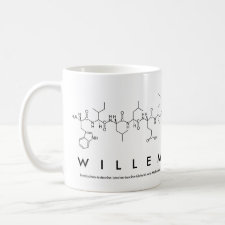
Authors: Tappura K, Vikholm-Lundin I, Albers WM
Article Title: Lipoate-based imprinted self-assembled molecular thin films for biosensor applications.
Publication date: 2007
Journal: Biosensors and Bioelectronics
Volume: 22
Issue: (6)
Page numbers: 912-919.
DOI: 10.1016/j.bios.2006.03.014
Alternative URL: http://www.sciencedirect.com/science/article/B6TFC-4JT9CM9-4/2/5e09351423f74e4c4438784c5db4cb5a
Abstract: Lipoate derivatives were used for the formation of imprinted self-assembled molecular thin films for the recognition of morphine. A large collection of lipoate derivatives was screened by molecular dynamics simulations in various solvents. A set of ligands showing favourable interactions with morphine in aqueous environment was selected for synthesis. Morphine-imprinted layers were then produced on gold substrates in mixed monolayers with morphine added as the template. The binding of ligands and morphine to gold, as well as the association/dissociation of morphine to the formed layers were studied with Surface Plasmon Resonance. Imprinted factors were highly variable and were dependent on ligand/morphine mixing ratio, lipoate derivative and monolayer preparation method. The imprinted factors were as high as 100 and 600 for one of the ligands. The results show that the simulations are able to provide correct information of the relative strengths of the molecular interactions between the ligand and morphine molecules in different solutions. The liquid phase simulations are, however, not able to predict the imprinted factors (i.e. distinguish between specific and non-specific binding), because the specificity is not formed before self-assembly on the surface
Template and target information: morphine
Author keywords: self-assembly, molecular imprinting, morphine, surface plasmon resonance, Lipoates, Molecular dynamics simulations



Join the Society for Molecular Imprinting

New items RSS feed
Sign-up for e-mail updates:
Choose between receiving an occasional newsletter or more frequent e-mail alerts.
Click here to go to the sign-up page.
Is your name elemental or peptidic? Enter your name and find out by clicking either of the buttons below!
Other products you may like:
 MIPdatabase
MIPdatabase









